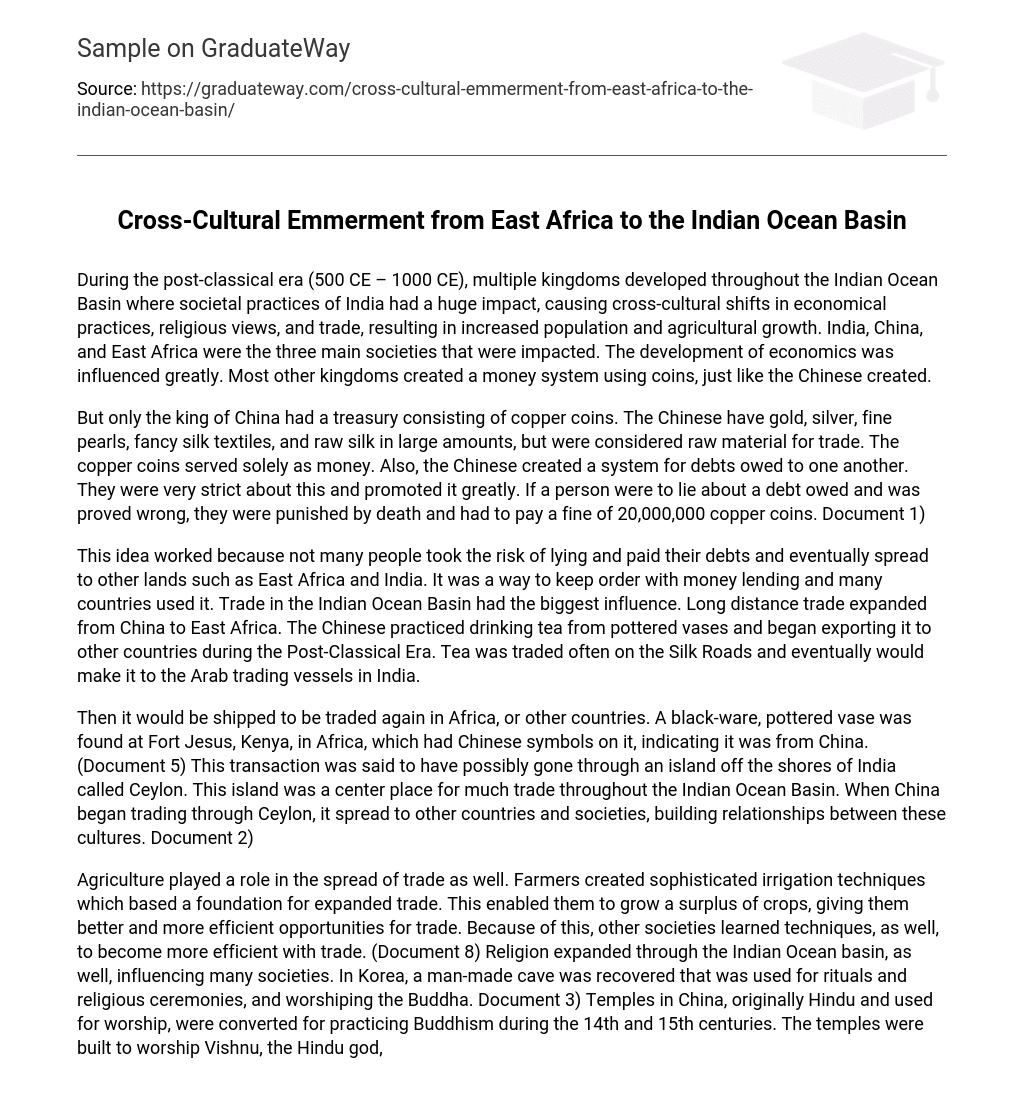During the post-classical era (500 CE – 1000 CE), the Indian Ocean Basin saw the rise of numerous kingdoms influenced by India. This led to cultural changes in economic practices, religious beliefs, and trade, ultimately leading to population growth and advancements in agriculture. India, China, and East Africa were particularly affected. The development of economics was greatly influenced by this period, as many kingdoms adopted a coin-based monetary system similar to that of China.
However, the Chinese had a unique treasury system which featured copper coins as the main currency. While they possessed significant quantities of gold, silver, pearls, silk textiles, and raw silk, these resources were primarily seen as trade materials. The Chinese exclusively used copper coins as a form of money. Moreover, they established a strict debt repayment system and strongly advocated for its implementation. Any individual who falsely claimed to owe a debt and was proven wrong would face severe punishment, including death and a hefty fine amounting to 20,000,000 copper coins. (Document 1)
This idea proved successful as it encouraged honesty and ensured debt repayment, leading to its adoption in various regions including East Africa and India. Many countries utilized this system to maintain financial order. The trade in the Indian Ocean Basin had a significant impact, with long-distance trade expanding from China to East Africa. During the Post-Classical Era, the Chinese popularized the practice of drinking tea from pottery vases and began exporting it to other nations. Tea became a common commodity traded along the Silk Roads and eventually reached Arab trading vessels in India.
Then the vase, made of black-ware pottery, was discovered in Fort Jesus, Kenya, Africa. The vase featured Chinese symbols, suggesting its origin in China (Document 5). It is believed that this trading process may have involved passing through the island of Ceylon, located near the shores of India. Ceylon served as a prominent hub for trade in the Indian Ocean Basin, facilitating connections between various countries and societies. As China engaged in trade relations with Ceylon, the influence and interactions between these cultures expanded (Document 2).
Agriculture played a role in promoting trade as well. Farmers developed advanced irrigation techniques, laying the groundwork for increased trading opportunities. This allowed them to produce an excess of crops, facilitating more efficient trade. As a result, other societies also adopted these techniques to enhance their trading practices. (Document 8) Religion also spread across the Indian Ocean basin, influencing numerous societies. In Korea, an artificial cave was discovered, serving as a site for rituals, religious ceremonies, and worshiping Buddha. (Document 3) Temples in China, which were originally Hindu and used for religious worship, were later converted for practicing Buddhism during the 14th and 15th centuries. These temples were originally devoted to Vishnu, the Hindu god, promoting adherence to Hindu values. (Document 6) Indian societies had a significant impact on this transformation as they expanded throughout the Indian Ocean Basin. (Document 4)
After the spread of Buddhism, the popularity of the religion waned in India, as Islam emerged and gained dominance. Throughout the Post-Classical Period, India remained united due to its robust cultural and traditional values, despite political fragmentation. The Indian Ocean Basin facilitated a significant cross-cultural influence, extending from China to India and East Africa, and allowing for the dissemination of various religious beliefs. The advent of new agricultural practices and ideas bolstered trading networks, leading to an increase in efficiency. Additionally, a rise in population fostered stronger bonds between different cultural communities.





